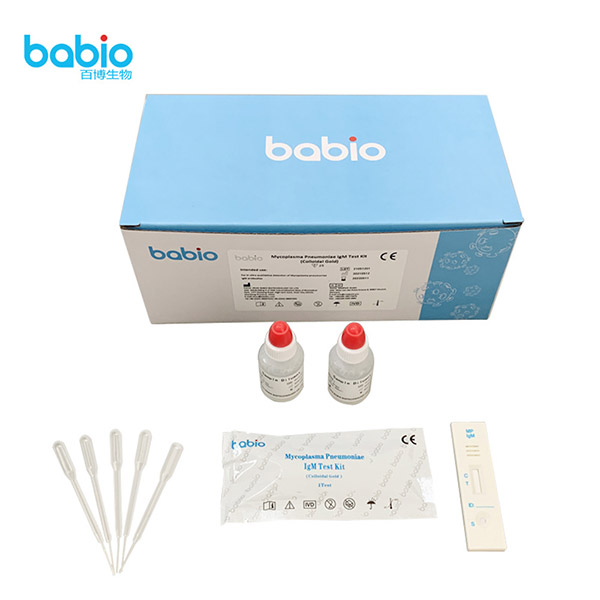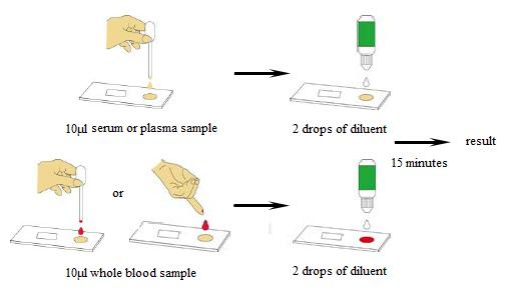
Intended Use
The Mycoplasma Pneumoniae IgM Test Kit (Colloidal Gold) is intended for in vitro qualitative
detection of IgM antibody in human serum, plasma or whole blood from individuals suspected of
Mycoplasma Pneumoniae by their healthcare point of care provider. This test is only provided for
use by clinical laboratories or to health care workers for point of care testing, and not for at home
testing. Results from antibody testing should not be used as the sole basis to diagnose or exclude
Mycoplasma Pneumoniae infection or to inform infection status. The diagnosis should be
confirmed in combination with clinical symptoms or other conventional testing methods.
Summary and Explanation of the Test
Mycoplasma Pneumoniae is a common disease that causes primary atypical pneumonia and other respiratory diseases. The main manifestations include headache, sore throat, fever, cough, etc. A few cases are asymptomatic. It is mainly spread by droplets and has the highest incidence among adolescents. The incubation period is 2-3 weeks and can be infected throughout the year. After infection with Mycoplasma Pneumoniae, its specific IgM antibody can be detected after 1 week. After about 4-5 weeks, the IgM content reaches its peak and then gradually decreases.
The Mycoplasma Pneumoniae IgM Test Kit (Colloidal Gold) can quickly detect Mycoplasma pneumoniae antibodies in human blood samples. This method has the advantages of speed, convenience, and less equipment. The test can be completed within 15-20 minutes.
Kit Reagents and Components

1. Store in a dry place at 2~30℃away from light.
2.Transport at 2-37℃ for 20days.
3. After opening the inner packaging, the test card will become invalid due to moisture absorption, please use it within 1 hour.
4. The shelf life of the test kit is 12 months from date of manufacture.
1. This test can be performed using either human serum, plasma or whole blood samples, including peripheral blood, plasma prepared from clinically used anticoagulants (EDTA, heparin, sodium citrate), etc.
2. Separate serum or plasma from blood as soon as possible to avoid hemolysis.
3. Serum and plasma samples may be stored at 2-8°C for up to 5 days if not tested immediately. For long-term storage, it should be stored at -20°C. Avoid multiple freeze-thaw cycles. Anticoagulated whole blood samples should not be stored for more than 72 hours at room temperature; not more than7 days at 2~8°C.
4. Prior to testing, bring frozen specimens to room temperature slowly and mix gently. Specimens containing visible particulate matter should be clarified by centrifugation before testing.
5. Do not use samples demonstrating gross lipemia, gross hemolysis or turbidity in order to avoid interference on result interpretation
Step1: Allow the test device, buffer, specimen to equilibrate to room temperature (15-30℃)
prior to testing. Step2: Remove the test device from the sealed pouch. Place the test device on a clean, flat
surface. Step3: Label the device with specimen number. Step4: Using a Disposable Dropper, transfer serum, plasma or whole blood. Hold the dropper
vertically and transfer 1 drop of specimen (approximately 10μ l) to the specimen well(S) of the
test device, and immediately add 2 drops of test buffer (approximately 70-100μ l). Make sure there
are no air bubbles. Step5: Set up a timer. Read the results in 15 minutes. Do not interpret the result after 20 minutes.To avoid confusion, discard the test device after
interpreting the result. If you need to store it for a long time, please take a photo of the result.
